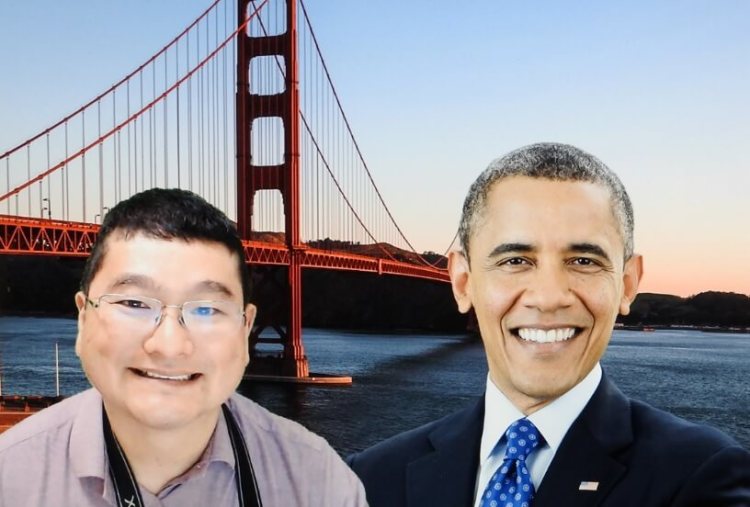Brothers Thomas and John Knoll aren’t the best-known people in Silicon Valley. But they’re the inventors of software that is used by millions today. They created Photoshop in 1988 and sold the program to Adobe Systems in 1989.
Their story is told in one of the new exhibits at the Computer History Museum, a museum in Mountain View dedicated to the preservation of artifacts of the computer age. On Saturday, the museum opened a new exhibition to the public: “Make Software: Change the World!” The exhibition’s goal is to show how software engineers, programmers, and other innovators have changed the world with software. It’s a $7 million exhibit designed for ages 10 and up.
The Photoshop display is one of the first things you see in a section dubbed Perception and Reality, which tells the history of photo editing and of digital music.

Above: This image of Times Square was created by Bert Monroy entirely in Adobe Photoshop.
Kirsten Tashev, vice president of Collections & Exhibitions at the museum, gave VentureBeat and other press a behind-the-scenes tour of the 6,000-square-foot exhibit. There’s a computer where you can take a selfie and patch in an artificial background, and even add former President Barack Obama into the image. It shows just what you can do with the image processing software.
Dag Spicer, senior creator at the museum, said the first version of the software was called Display, before it became Photoshop. Knoll said at the museum press event that he and his brother were toying with a fun project. John Knoll worked at Industrial Light & Magic, the special effects company started by George Lucas. Thomas Knoll was a fan of photography, and the two of them brought their influences to the creation of Photoshop.
Knoll started the software, which allowed him to move pixels around on a screen, and showed it to his brother, who contributed his own ideas. They iterated on it for several months. Then John Knoll suggested they sell it to Adobe.
“For the first year of the development of Photoshop, it was done as a hobby,” Thomas Knoll said. “We never had the plan going into this thing of creating what it became….There are huge sections of Photoshop today that I don’t even know how to use.”

Above: Left: John Hollar of the Computer History Museum; Gio Hunt of Blizzard; Thomas Knoll, cocreator of Photoshop; and Kirsten Tashev.
The exhibit has full-size billboard image of Times Square at night, a digital painting created by artist Bert Monroy. The image includes a picture of Monroy taking a picture of his wife. The file is 6.52 gigabytes, and it took Monroy four years to create with 15,000 Photoshop and Illustrator files. It has 750,000 layers.
The exhibit shows simple things you can do with Photoshop, like doctoring a selfie. But it also has tips on things you can do that take more expertise.
“There’s no question that Photoshop has changed just about everything, from photography to marketing to filmmaking,” Tashev said. “It’s also changed how we see the world, especially in journalism. That picture of your brother golfing with the President — it might not be real.”
Thomas Knoll said that nobody treats him like a celebrity many years later, and he’s quite happy with that. But he said he is proud when he walks into any bookstore in any part of the country and sees “How to Photoshop” books. That’s a big impact.
In a panel, John Hollar, CEO of the Computer History Museum, asked the creator how to avoid having Photoshop being used as a tool for “fake news.”
“The key word is that it’s a tool. It really falls back to the users of the tool and for consumers to do their own vetting,” Thomas Knoll said. “The impetus is on the journalists reporting the news to be honest and the consumers of the news to do some validation.”


